Photo
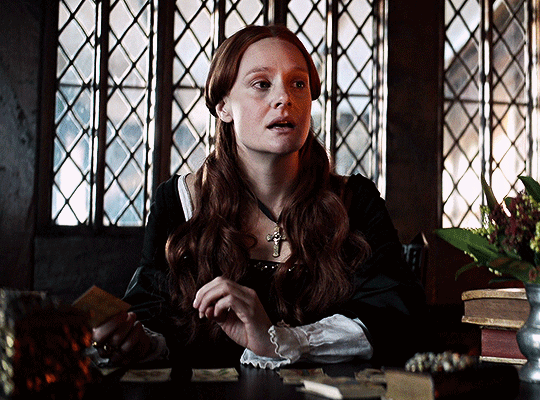

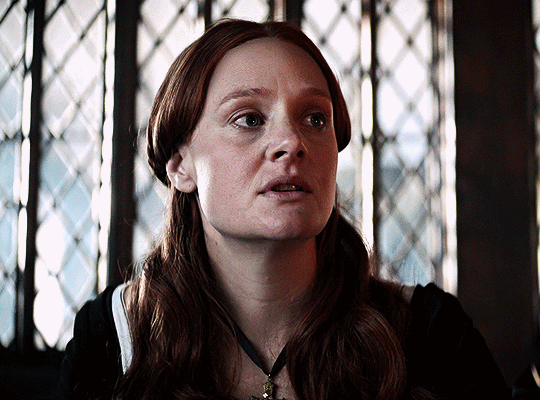
Mary Tudor in «Becoming Elizabeth» | 1.05
262 notes
·
View notes
Note
Hello ! I was wondering on what is your take on the false pregnancies of Mary Tudor . Do you think that she had a miscarriage early on her pregnancy? Or do you think it was an actual phantom pregnancy.
I tend to think she had an early miscarriage in 1555 that manifested as a phantom pregnancy for a few reasons.
It's shown in various different sources that Mary is reluctant throughout her 'pregnancy 'to confirm it's real.
An English ambassador told the Emperor in November that Mary "will not confess the matter until it is proved to her face" and it's only around Christmas Mary acknowledges that "As for that child which I carry in my belly, I declare it to be alive.” Carole Levin points out it's a strange word choice and I agree.
The biggest piece of evidence is at the beginning of May in my opinion. When the court are awaiting her child's birth, it's recorded that "according to her count it would not be strange if her delivery were to be delayed until the 6th of June."
Mary herself seemed to think she was a month behind her pregnancy then everyone else and there must be a reason for that.
We know she was recorded as being ill in mid September: "I have noticed her feeling sick (or seen her being sick) besides which her doctor has given me positive assurance, saying that if it were not true all the signs described by physicians would prove to be fallacious." I don't find it hard to believe Mary found herself nauseous and bleeding and thought it was a late period (it's well known she suffered badly with menstruation) or an early miscarriage, while her optimistic ladies and doctors handwaved it all away as usual symptoms of pregnancy, which are real and common.
With the altered hormones in Mary's body it would lead to her still producing pregnancy symptoms for a while (you can still produce them several weeks after miscarrying). I think this is likely what led her to later believe she was pregnant after all, but due after everyone else expected.
It's 9 months from October to June, when Mary believed she was due...
This is all my personal theory, but to me this explains her initial unsurety, the peculiar wording declaring she's not just pregnant but the babe in her belly is "alive", and her miscounting the dates compared to everyone else.
As for the 1557/8 I'm less sure of that just because there's hardly any information about it. It seems again Mary, despite her portrayal in media, was not certain of the pregnancy because she delayed informing Philip until what she thought was the seventh month.
#mary i of england#mary tudor#i agree with this#i am sure mary knew more about her due date than anyone else#history
19 notes
·
View notes
Text
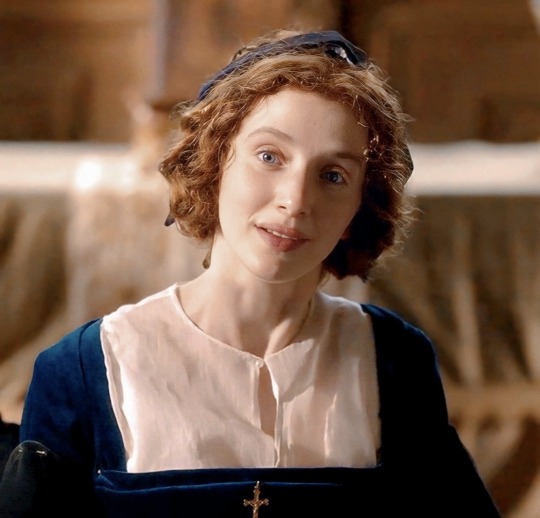
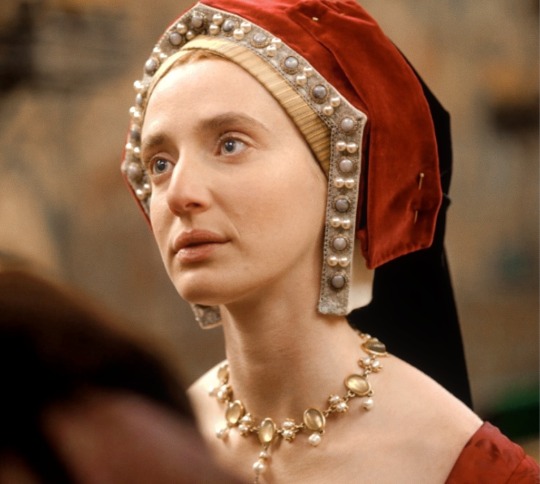
Lilit Lesser as Princess Mary (Wolf Hall: Season One/ Season Two)
#mary i of england#mary tudor#princess mary#i am sitted#the costumes look better this upcoming season#wolf hall#Lilit Lesser
146 notes
·
View notes
Text
“Philip and Mary gave lavish and brutal entertainment on Easter Sunday, 18th April [1557], when [secretary for the Council of State in the Netherlands, Jose de] Courteville reports that they hosted a feast “with many dances, combats of dogs or bears, bulls and monkeys on horseback”.”
— Nicolaus
Mameranus, Poetry and Politics at the Court of Mary Tudor by Matthew Tibble,
2020 , page 108
24 notes
·
View notes
Text
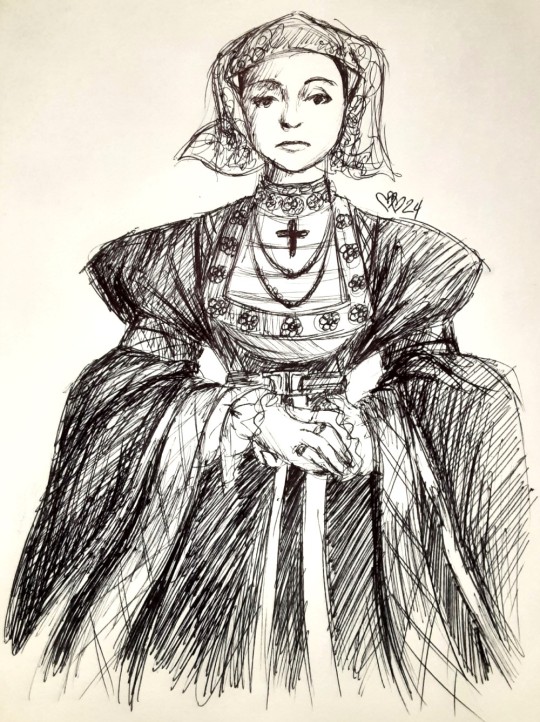
I was in the mood to draw an actual person and out of all the official/most famous paintings of Henry VIII's wives, I like Anne of Cleves' portrait the best, so I decided to draw that. This was a lot of fun! 20 min doodle, pen on plain white paper.
147 notes
·
View notes
Text
“As [French ambassador] Noailles reported, Mary would force ‘not only men, but also the elements themselves, to consent to her will’.”
— Mary Tudor England’s First Queen by Anna Whitelock, 2009, page 288
67 notes
·
View notes
Text
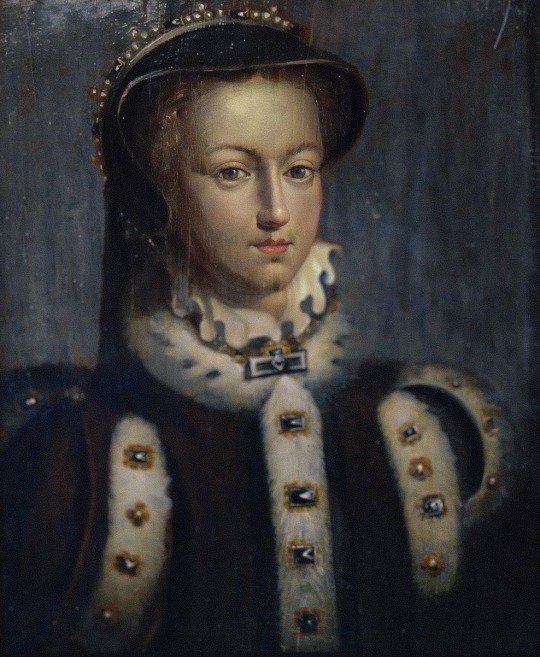
Bust length portrait of Mary I of England* in fur trimmed gown ; English School, 18th century, Oil on panel (Lot 1064 of Reeman Dansie Auctions)
Despite the portrait being auctioned as portrait of Mary, Queen of Scots, it is has inscribed verso 'of Mary Tudor/Mary Stuart in the back . Additionally, by analyzing the sitter’s attire and appearance it has strong similarities to Mary I of England .
70 notes
·
View notes
Note
i can't stop thinking about your philip short king drawing but my question is: do we know how tall //Mary// was? Because I know for a fact Philip was about 150-155cm or 4'11 - 5'0 because ive measured his armour
I am so glad I found someone who is interested about the height of Philip II of Spain ! Unfortunately her exact measurements are unknown. We know for certain that she was below the average height of an English woman for the time period as she was described as “of low rather than of middling stature, but, although short, she has not personal defect in her limbs...”.
Dr Gregori Galofré-Vilà, from the Department of Sociology at the University of Oxford, in their research mentioned that the average “height of people from 1400 and 1700 were similar to those of the 20th century”. The average height for women would be around 5’2-3’.

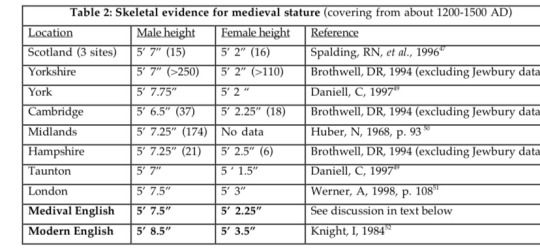
Based on this data and the description of Mary (also her health record since she suffered from malnutrition) we can assume that she probably around the same height/slightly shorter than Philip.
My drawing was based on this portrait of them, but if it was a historical accurate Philip he would have been maybe one-two inches taller .

#he was my height#man child#thank you for this !#she loves her short king !#considering that men were like 5’7
13 notes
·
View notes
Text

243 notes
·
View notes
Text
“‘Bagges’ (i.e. a pair of pockets, not a cloak or gown bag) are an integral part of [Mary’s] loose gowns from their first mention in 1554, a feature previously noted only in accounts of men’s dress.”
— Mary Tudor’s Wardrobe by Alison Carter, 1984, page 17
78 notes
·
View notes
Text
“To Chapuys’ credit if he believed himself to be that important in her life, which he was, he commonly diminished his own role in at least a titular manner. He was quick to point out how much Mary depended on him, but apprehensive to state that it put him in any authoritative role in her life. In fact, although Henry was repeatedly hurtful if not purposely mean to Mary as she matured, Chapuys was always careful to not cast the king as the nemesis. That role, in Chapuys’ view, most commonly fell upon Anne Boleyn until her death in 1536, and then later to Thomas Cranmer. If anything, Chapuys acted as an apologist for Henry’s lack of action in his daughter’s defense, often blaming Anne’s influence with the king for things that he easily could have done otherwise for Mary’s benefit, safety, and happiness.”
— Derek Michael Taylor, Stoking the Fires: The Relationship between Mary Tudor and Eustace Chapuys, 1529-1545
#taylor tag#mary i of england#eustace chapuys#mary i#in his lifetime saw her become queen#father for sure
17 notes
·
View notes
Photo

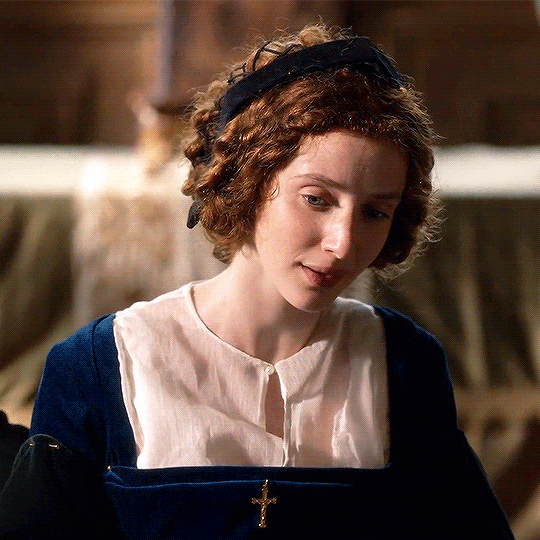
LILY LESSER as PRINCESS MARY in WOLF HALL
234 notes
·
View notes
Text
Someone on Tik tok pointed out that Emma D’arcy looks similar to Mary I of England !!

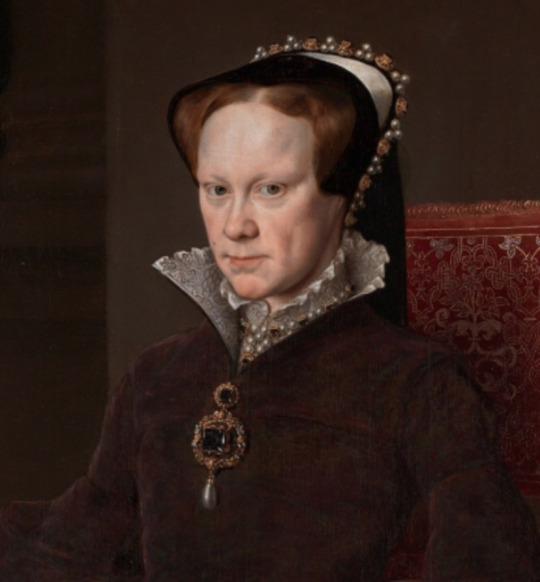
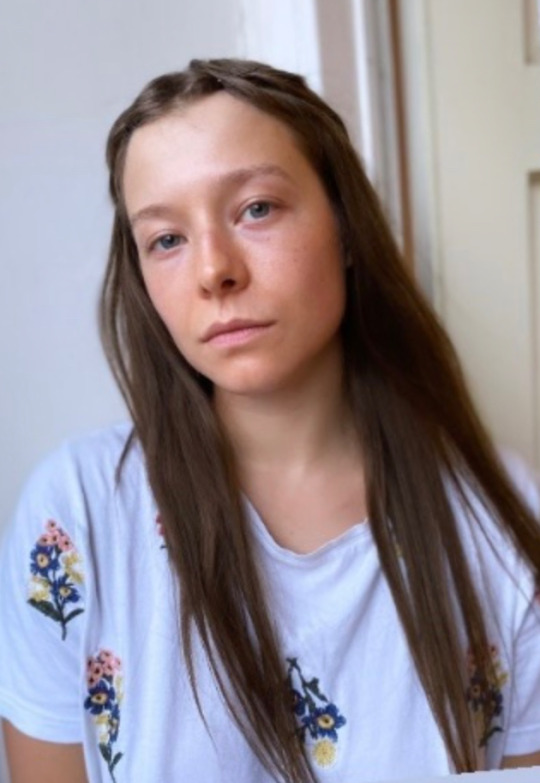
46 notes
·
View notes
Text
“The King caused the Princess Mary his daughter, who was two years old, to be brought into the apartment where they were. The Cardinal, he (Giustinian), and the Lords kissed her hand, pro more. Greater honour was paid to the Princess than to the Queen. On seeing the Reverend Dionvsius Memo, who was at a little distance, the Princess commenced calling out in English, “Priest!” and he was obliged to go and play for her; after which the King, with the Princess in his arms, came to him (Giustinian) and said, “Per Deum! iste est honestissimus vir, et unus carissimus: nullus unquam servivit mihi fidelius et melius illo. Scribaris Domino vestro quod habeat ipsum commendatum.””
— Sebastian Giustinian to the Signory, 28th February 1518
49 notes
·
View notes
Text

Mary I, Queen of England by The Balbusso Twins
Mary I: Queen of Sorrows by Alison Weir
#mary i#mary i of england#thank god weir didn’t pick a stockphoto for the cover of her book#artist: the balbusso twins
174 notes
·
View notes
Text
The earlier policies of Mary’s reign were both realistic and moderate, based on reform and a degree of reconciliation. It was not in Mary’s nature to demand revenge. Even her chief instrument, Reginald Pole, was very much within the reforming tradition of the Catholic Church. In 1536, for example, he had played an important part in working on Consilium delectorum Cardinalium de emendenda ecclesia. This had set in motion the Catholic Reformation and was ample evidence of his credentials as a reformer. On his return to England, he made this a priority, summoning a synod to remove abuses within the church and to revive its preaching and educational functions. Even the replacement of Protestant bishops by Catholics had a positive side: the emphasis was very much on the scholarly reputation and pastoral experience of the new incumbents. Mary was trying also to avoid the excessive involvement in politics which had marked the higher clergy during the reign of Henry VIII. Although they were government appointees, they were not seen merely as vehicles for the enforcement of government policy. Pole did a great deal to enhance the quality of the clergy and the care they provided. In 1555, for example, the Twelve Decrees drawn up by the synod emphasised the need for residence. He also revived education and learning among the clergy, checking on these through visitations. Recognition of his achievement came in 1556 with his election to the posts of chancellor at Cambridge and Oxford Uni-versities. There was also a considerable amount of assistance for the Catholic priesthood in carrying out its duties. Several major works were published by John Angel, Richard Smith and, above all, Bishop Bonner, whose Book of Homilies (1555) and A Prof i table and Necessary Doctrine became prescribed reading. Such an approach encountered considerable success. Legislation authorising the changes was accomplished with remarkable ease, raising questions about the traditional view that England had instinctively become a Protestant country. There was also little popular resistance, since Mary’s early policy was actually in keeping with a large part of public opinion which had, in any case, never been particularly enthusiastic about the spread of Protestantism during the previous reign. The transition from Protestant to Catholic liturgy and ritual was also relatively harmonious.
The Mid Tudors Edward VI and Mary, 1547-1558 (Questions and Analysis in History) (Stephen J. Lee)
26 notes
·
View notes
Text
"Trusty and well beloved, we greet you well, and where it hath pleased Almighty God of his great grace and infinite goodness and as we verily trust by the mediation and intercession of that blessed Virgin Mary his mother, to send unto us at this time good speed in the deliverance and bringing forth of a princess, to the great rejoicing and comfort of my lord, us, and all his loving subjects of this his realm, for which singular grace we have especial cause to give high thanks laud and praising unto our said maker and so we right heartily do. And forasmuch as we trust this our good speed is to the comfort of you and to all other lords true subjects of that his city advertise you thereof by these. Desiring therefore and praying you to give with us unto our said maker laud and praising, and to pray for the good health and preservation of the said princess. Given under our signet at my lords manor of Greenwich, the 18th February 1516"
- Catherine of Aragon's letter to the provost and brethren of Tournay, announcing the birth of her daughter Princess Mary, later Queen Mary I, in Archaeologia, or, Miscellaneous tracts relating to antiquity/ Society of Antiquaries of London. Volume 27, 1838, page 260


Happy Birthday Mary!
35 notes
·
View notes